How To Use A Tire Pressure Gauge: A Simple Guide
Table of Contents
How to use a tire pressure gauge? Maintaining the proper tire pressure is essential to keeping your car running safely and efficiently. Under-inflated tires can lead to decreased fuel economy and a rougher ride, while over-inflated tires can cause premature wear and tear. Checking your tire pressure regularly with a tire pressure gauge is the best way to ensure that your tires are inflated to the correct level.

It’s important to keep your tires properly inflated for safety and fuel efficiency reasons. A tire pressure gauge is the best way to measure your tire pressure, and it’s a tool that every driver should have in their arsenal. In this blog post, we will show you how to use a tire pressure gauge so that you can keep your tires properly inflated at all times!
What is a Tire Pressure Gauge?
A tire pressure gauge measures the amount of air pressure inside a tire. The most common type of tire pressure gauge is the analog, or dial, gauge. This type of gauge has a needle that moves along a scale to indicate the air pressure. More sophisticated digital tire pressure gauges use electronic sensors to measure air pressure and display the results on an LCD screen. Whether analog or digital, all tire pressure gauges work in essentially the same way.

Once the gauge is pressed onto the valve stem, air from the tire escapes into the gauge, which then registers the pressure. It is important to check your tire pressure regularly, as even a small drop in pressure can impact fuel economy and cause tires to wear prematurely. A properly inflated tire also provides better handling and braking performance, as well as increased safety.
How to use a tire pressure gauge?
A tire pressure gauge is a very important tool to have in your vehicle. It is used to check the air pressure in your tires and make sure they are inflated properly. Without the proper air pressure, your tires will not work correctly and can cause problems while driving. Here are some steps on how to use a tire pressure gauge:
- Locate the valve stem on your tire. This is the part of the tire that you screw the cap on and off of.
- Take the tire pressure gauge and place it on the valve stem. Make sure that it is secure and will not fall off.
- Screw the chuck onto the valve stem until it is tight. You do not want any air to escape while you are taking reading.
- Push down on the handle of the tire pressure gauge until you hear a hissing sound. This means that it is working correctly.
- Read the gauge to see what the air pressure is in your tires. If it is below the Recommended PSI, then you will need to add air to your tires. If it is above, then you do not need to add any air.
- Once you have finished checking the air pressure, unscrew the chuck from the valve stem and put the cap back on tightly. Make sure that you do not lose the cap.
- Repeat this process for each of your tires, making sure that they all have the recommended air pressure before driving.
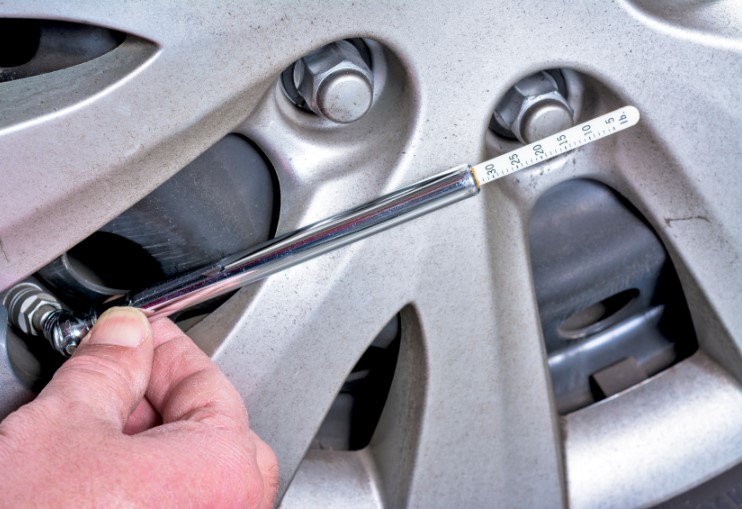
If you are regularly checking your tire pressure, then you should also be regularly rotating your tires as well. This can help to prevent uneven wear and tear on the treads, which in turn can help to extend the life of your tires. At the same time, regular tire rotations can also improve your handling and braking performance, as well as enhance safety on the road.
Whether you are a seasoned driver or just learning how to drive, it is important to understand how to use a tire pressure gauge correctly. By doing so, you can ensure that your tires are properly inflated and extend their lifespan. And remember to take your car in for regular maintenance checkups, including tire rotations and alignment checks, to keep it running at its best!
How to check tire pressure?
Maintaining proper tire pressure is essential for both safety and fuel efficiency. Fortunately, it is easy to check your tire pressure at home with a few simple tools. First, locate the valve stem on your tire. This is the small black cap that sticks out from the side of the tire. Once you have found the valve stem, use a tire gauge to check the pressure. Most tires should be inflated to around 32 psi (pounds per square inch).
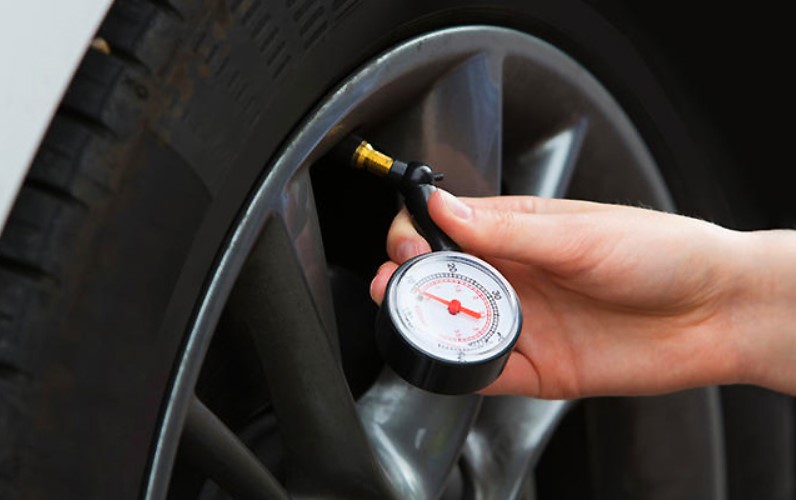
If your tire pressure is low, use a hand pump or air compressor to add air until it reaches the proper level. It is important to check your tires on a regular basis to ensure that they are properly inflated and in good condition. By taking a few minutes to check your tire pressure, you can help keep yourself safe on the road and save money at the gas pump.
How to use a conventional tire pressure gauge?
A conventional tire pressure gauge is a simple and effective way to check the air pressure in your tires. To use one, first, remove the cap from the tire valve. Then, holding the gauge snugly against the valve, press down firmly to get a reading. If the needle points to below 20 PSI, then your tires are underinflated and you will need to add air. Conversely, if the needle points above 30 PSI, then your tires are overinflated and you will need to let some air out. The ideal pressure for most passenger vehicles is between 22 and 26 PSI.

Once you have checked all of your tires, be sure to replace the valve caps to keep dirt and debris out. By following these simple steps, you can ensure that your tires are properly inflated and help extend their lifespan. And remember to check your tire pressure regularly as you drive, as fluctuations in air pressure can occur over time. With regular care and maintenance, your tires will keep you safe on the road for years to come!
How to use an electronic tire pressure gauge?
An electronic tire pressure gauge is a simple yet essential tool for any car owner. Just like a traditional tire pressure gauge, it is used to check the air pressure in your tires. However, unlike a traditional gauge, an electronic tire pressure gauge uses a digital display to give you an accurate reading. To use one, simply remove the cap from your tire’s air valve and press the gauge onto the valve. The digital display will show you the current air pressure in your tire.
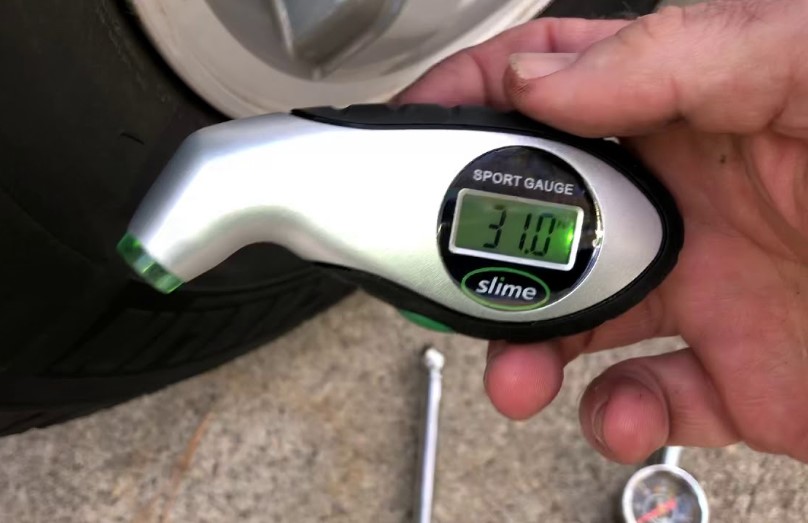
If the reading is lower than the recommended amount, add more air to your tire until it reaches the desired level. Once you have checked and inflated all of your tires, be sure to put the caps back on the valves to prevent air from escaping. With just a few quick steps, you can use an electronic tire pressure gauge to keep your tires in top condition and ensure your safety on the road. So if you are looking for a smart and easy way to maintain your car, don’t hesitate to invest in an electronic tire pressure gauge today!
What are the benefits of a tire pressure gauge?
If you’re like most drivers, you probably don’t give much thought to the air pressure in your tires. However, maintaining the correct tire pressure is important for your safety and can improve your car’s fuel economy. A tire pressure gauge is a useful tool that can help you make sure your tires are properly inflated. Here we’ll take a look at some of the benefits of using a tire pressure gauge.
Improved fuel economy
A tire pressure gauge is a small, inexpensive tool that can have a big impact on your vehicle’s fuel economy. Studies have shown that properly inflated tires can improve fuel economy by up to 3 percent. That may not seem like much, but it can add up to significant savings over time. In addition to improving fuel economy, properly inflated tires also offer other benefits. They last longer, provide better traction and improve handling. A tire pressure gauge is a simple way to keep your tires in good condition and save money at the pump.
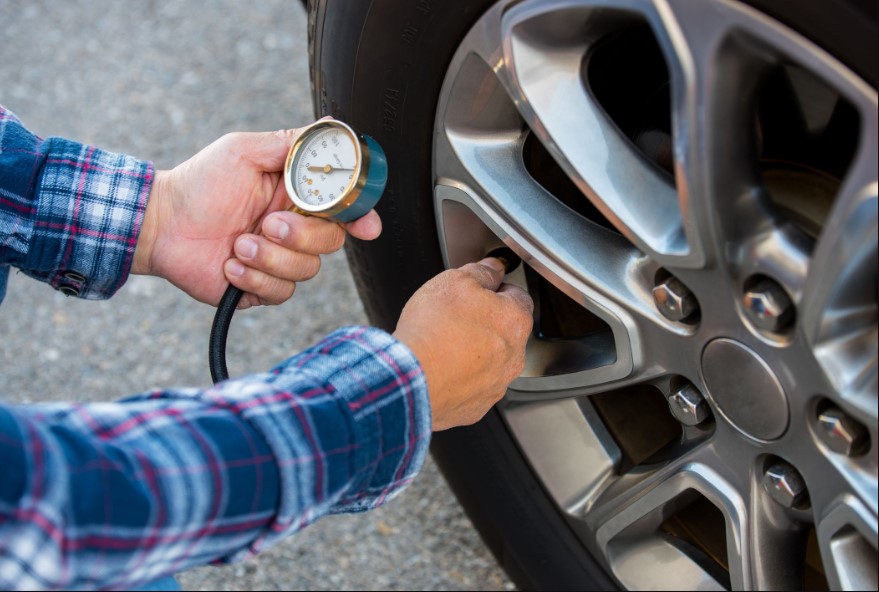
Better handling and traction on the road
A tire pressure gauge is a simple yet essential tool for any driver. By keeping your tires properly inflated, you can improve your vehicle’s handling and traction on the road. This can be especially important in wet or icy conditions when slick roads can increase the risk of accidents. In addition, tire pressure gauges can help you save money on fuel costs.
Properly inflated tires are more efficient than those that are underinflated, meaning that you’ll get more miles per gallon. So next time you’re at the gas station, be sure to reach for a tire pressure gauge to keep your car running safely and smoothly.
Longer tread life
One of the most significant benefits of a tire pressure gauge is that it can help to prolong the life of your tires. By keeping your tires properly inflated, you can reduce wear and tear on the treads. As a result, you’ll be able to get more miles out of your tires before they need to be replaced. In addition, properly inflated tires are less likely to suffer from flats or blowouts. If you’re looking for a way to save money and extend the life of your tires, a tire pressure gauge is a wise investment.
As you can see, there are many benefits to using a tire pressure gauge regularly. So if you want to keep yourself and your car safe on the road, be sure to invest in a good quality tire pressure gauge today!
How do I know if I need air in my tires?
The best way to know if your tires need air is to check the tire pressure monthly and before long trips. Many newer cars have a tire pressure monitoring system that will warn you when the pressure in one or more tires is low, but it’s still a good idea to check regularly. You can find the recommended tire pressure for your car in the owner’s manual or on the placard on the driver’s doorjamb.
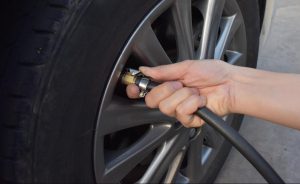
Use a tire gauge to check the pressure; don’t rely on the air pressure gauge at a gas station, as it may not be accurate. If the pressure is low, add air until it reaches the recommended level. Check all four tires, even if only one seems low; it’s possible that all of them are underinflated. Remember to check the spare tire, too. Keeping your tires properly inflated not only helps improve gas mileage but also extends the life of your tires and enhances safety by reducing the risk of a blowout.
Can you check air pressure without a gauge?
Many people think that they need a special gauge in order to check the air pressure in their tires. However, it is actually possible to check the air pressure without a gauge. One way to do this is to press on the tire with your hand. If the tire feels firm, then the air pressure is likely to be within the acceptable range. Another way to check the air pressure is to look at the tread of the tire. If the tread is wearing evenly, then the air pressure is likely to be adequate.
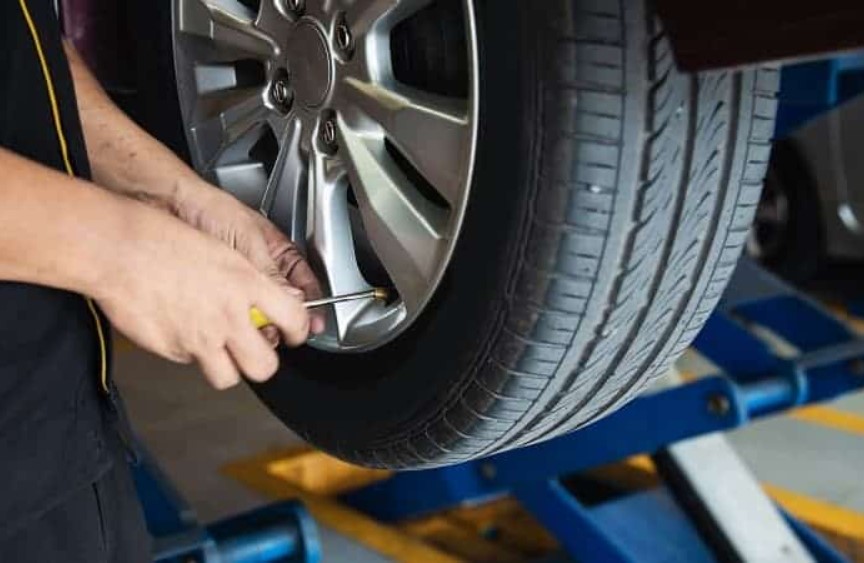
However, if the tread is wearing down on one side more than the other, then this could be a sign that the air pressure is too low. Checking the air pressure regularly is an important part of maintaining your vehicle, so it is worth taking the time to learn how to do it without a gauge. This way, you can ensure that your tires are always properly inflated and get the best possible performance from your car.
How to add air to tires?
One way to prolong the life of your tires is to make sure they’re properly inflated. Tires can lose air for a number of reasons, including normal wear and tear, leaks, and temperature changes. Fortunately, adding air to tires is a relatively simple task that can be done at home with a few supplies. All you need is an air compressor or hand pump, a tire gauge, and access to a power outlet.

First, check the manufacturer’s recommended inflation level for your specific tires. Once you know how much air to add, connect your air compressor to the tire valve and turn it on. Add air until the needle on the tire gauge reaches the correct level. Repeat this process for all four tires, then disconnect the air compressor and replace the cap on the tire valve. By taking care of your tires, you can help ensure a smooth ride for years to come!
As you can see, there are many different steps involved in adding air to tires. Depending on the type of car you drive and the equipment you have available, this process may be a bit more or less complicated. However, with some basic tools and a little knowledge, it is easy to add air to your tires and keep them properly inflated. So why wait? Pick up the supplies you need today and start keeping your car in top shape!
How important are properly pressured tires?
Maintaining proper tire pressure is essential for optimal vehicle performance. Underinflated tires can lead to a number of problems, including decreased fuel efficiency, reduced handling, and increased wear and tear. Moreover, tire pressure that is too low can be dangerous, as it can cause the tire to overheat or even blow out. On the other hand, tires that are inflated too much can also be hazardous, as they may make the car less stable and more difficult to control.

In addition, overinflated tires are more susceptible to punctures. As such, it is important to check the tire pressure on a regular basis and inflate or deflate as needed. By keeping tires properly pressured, drivers can help ensure both safety and performance, making this a crucial step in maintaining any car. So if you want to keep your vehicle running smoothly, be sure to take the time to check and maintain your tire pressure!
Tips for keeping your tires properly inflated
Maintaining the correct tire pressure is an important part of keeping your vehicle in good condition. Drivers often forget to check their tire pressure, which can lead to decreased fuel economy and premature wear on the tires. Below, we will provide tips for maintaining proper tire pressure.
Get an air pressure gauge
One of the best ways to ensure that your tires are properly inflated is to invest in an air pressure gauge. These gauges are relatively inexpensive and easy to use, and they can help you to avoid potential problems down the road. Simply check your tire pressure on a regular basis, and add air as needed. Inflating your tires may seem like a small thing, but it can make a big difference in the long run.
Know the correct pressure for your tires
The best way to ensure that your tires are properly inflated is to check the pressure on a regular basis and adjust as needed. Most tires have a recommended pressure range, so be sure to consult your owner’s manual or tire placard before inflating. And remember, it’s always better to err on the side of caution when it comes to tire pressure. If you’re unsure about the correct pressure for your tires, it’s always best to seek out professional advice.

Adjust as needed
The best way to ensure that your tires are properly inflated is to check their pressure regularly and adjust as needed. You can find the recommended tire pressure for your vehicle in the owner’s manual or on a placard located on the driver’s side doorjamb. With a little care and attention, you can help extend the life of your tires and keep your car running smoothly.
Check your tire pressure regularly
One of the most important tips for keeping your tires properly inflated is to check the pressure regularly. At least once a month, and preferably more often if you live in an area with extreme temperatures, you should use a reliable tire gauge to check the pressure of all four tires. If any of the tires are significantly under-inflated, it can lead to reduced fuel efficiency, increased wear and tear, and even a blowout. Additionally, over-inflated tires can also be dangerous, as they are more likely to lose traction on wet or icy roads.
Keeping your tires properly inflated is an essential step in maintaining any car. Not only does it help with fuel economy and tire wear, but it also helps ensure safety on the road. By following the tips above, you can keep your tires properly inflated and avoid a number of potential issues. So why wait? Start checking and adjusting your tire pressure today!
Conclusion for how to use a tire pressure gauge?
Using a tire pressure gauge is an easy way to keep your tires properly inflated, which can help improve gas mileage, prolong tire life, and make for a more comfortable ride. Plus, it’s an important safety measure when you’re out on the road. By following the simple steps above, you can ensure that your tires are always in good condition and that you’re always driving safely.
Now that you know how to use a tire pressure gauge, be sure to check your tires regularly! You can do this once a month or before long trips. Consider keeping a spare tire in your trunk, just in case you get a flat. So don’t wait – make sure your tires are properly inflated today and drive with peace of mind knowing you’re prepared for anything. Please share this post with your friends and neighbors so they can learn how to use a tire pressure gauge too.


It is fairly sufficient for me that I have spent over three hours today browsing the internet but have yet to come across an article as fascinating as yours. If only all website owners and bloggers produced high-quality content in the same manner as you, the internet would be considerably more useful than it is now.